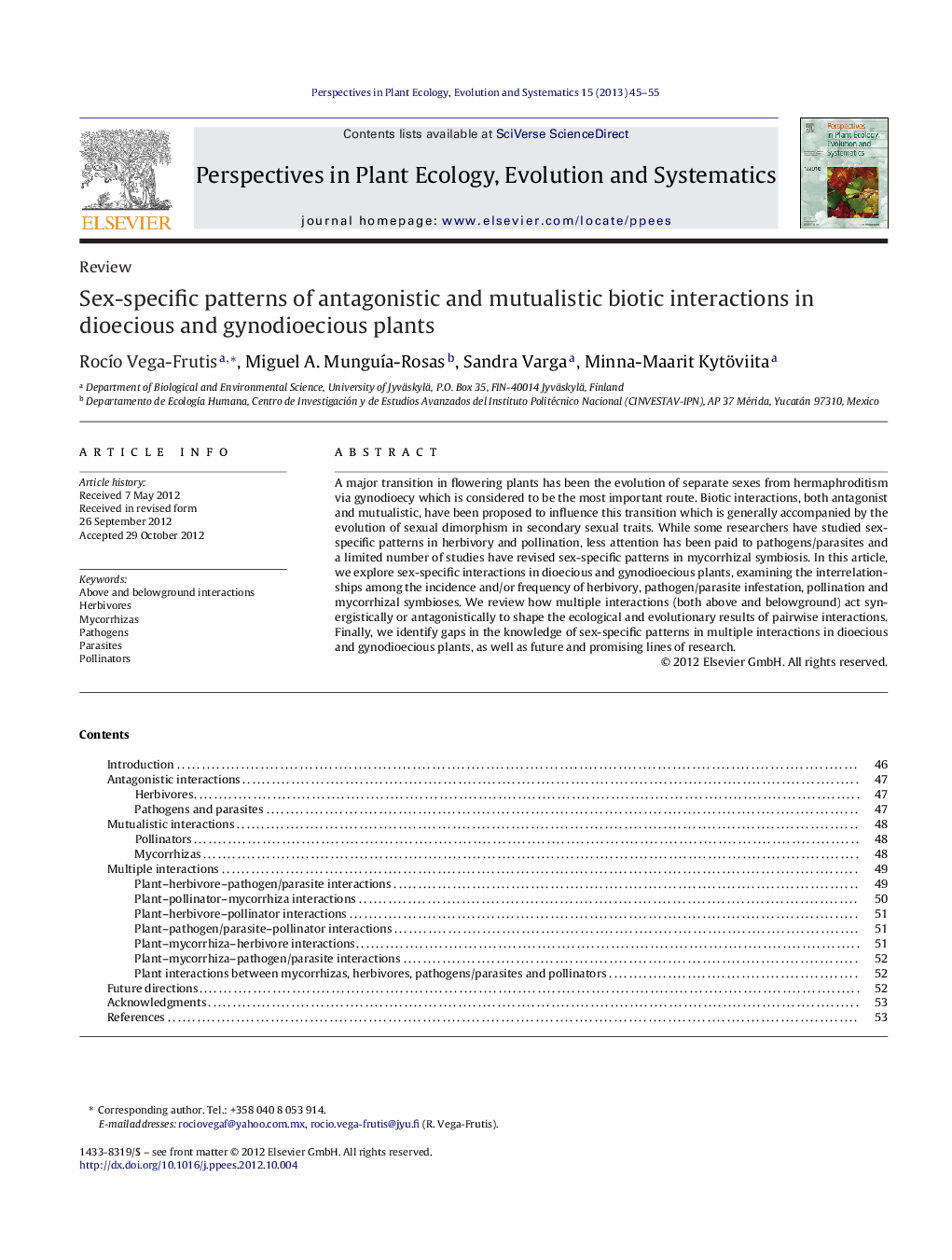| Article ID | Journal | Published Year | Pages | File Type |
|---|---|---|---|---|
| 4400983 | Perspectives in Plant Ecology, Evolution and Systematics | 2013 | 11 Pages |
A major transition in flowering plants has been the evolution of separate sexes from hermaphroditism via gynodioecy which is considered to be the most important route. Biotic interactions, both antagonist and mutualistic, have been proposed to influence this transition which is generally accompanied by the evolution of sexual dimorphism in secondary sexual traits. While some researchers have studied sex-specific patterns in herbivory and pollination, less attention has been paid to pathogens/parasites and a limited number of studies have revised sex-specific patterns in mycorrhizal symbiosis. In this article, we explore sex-specific interactions in dioecious and gynodioecious plants, examining the interrelationships among the incidence and/or frequency of herbivory, pathogen/parasite infestation, pollination and mycorrhizal symbioses. We review how multiple interactions (both above and belowground) act synergistically or antagonistically to shape the ecological and evolutionary results of pairwise interactions. Finally, we identify gaps in the knowledge of sex-specific patterns in multiple interactions in dioecious and gynodioecious plants, as well as future and promising lines of research.
